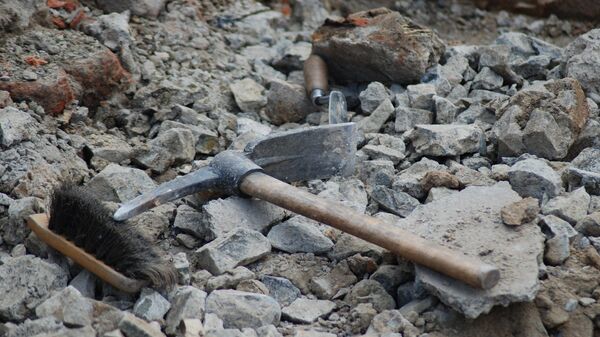Archaeologists from the US and Israel have recently found new evidence suggesting that an earthquake could have been the reason behind the destruction of the palace at Tel Kabri, once in the Kingdom of Canaan and now in the modern-day Upper Galilee region, which ranks among the most exciting archaeological sites in today’s Holy Land, as per a study published in PLOS One.
The 75-acre site houses one of the biggest Middle Bronze Age palaces in Israel and dates back to sometime between 1990 BC and 1700 BC. According to Assaf Yasur-Landau, a professor of Mediterranean archaeology at the University of Haifa, the research team had for years been wondering what could have caused the palace and the sprawling plot of earth around it to be abandoned, before they started to uncover a trench running through part of the palace, but an initial analysis suggested that it was modern, “perhaps dug within the past few decades or a century or two at most”.

"But then, in 2019, we opened up a new area and found that the trench continued for at least 30 meters, with an entire section of a wall that had fallen into it in antiquity, and with other walls and floors tipping into it on either side”, Yasur-Landau recounted. The trench was believed to possibly be a result of the ground shaking or liquefaction due to an earthquake, the study continued.
Speaking about the possible evidence of earthquakes in antiquity, Michael Lazar, the author of the Tel Kabri study, noted that uncovering it is extraordinarily tricky. For instance, sites where weaker construction materials like mud are used, earthquakes are reportedly unlikely to leave an imprint on the archaeological record, whereas at the Canaan site, the archaeologist uncovered a mix of stone foundations for the site's walls.
Evaluation of ‘Alternative Scenarios’
Lazar stressed that to identify ancient quakes, they largely had to combine macro- and micro-archaeological methods, and likewise to “evaluate alternative scenarios, including climatic, environmental and economic collapse, as well as warfare, before we were confident in proposing a seismic event scenario".
As Eric Cline, a professor of classics and anthropology at George Washington University, put it, the whole process looked like “the earth simply opened up and everything on either side of it fell in”, stating that it is unlikely that the process was caused by any violent human activity.
Ruth Shahack-Gross, a professor of geoarchaeology at the University of Haifa and co-author of the study, remarked that the floor deposits point to an abrupt collapse rather than a slow accumulation of degraded mud bricks from the palace walls or ceilings.
"The rapid collapse, and the quick burial, combined with the geological setting of Tel Kabri, raises the possibility that one or more earthquakes could have destroyed the walls and the roof of the palace without setting it on fire”, the researcher summed up in the study.
The Kingdom of Canaan was located in the Southern Levant and, according to the Book of Joshua in the Bible's Old Testament, it was targeted by the ancient Israelites who aimed to destroy and supplant it. The Battle of Jericho was among the most prominent ones in the conquest of Canaan. Most recently, in 2013, an international team of archaeologists found indication of an ancient wine cellar historically located under Tel Kabri. At the time, they determined it was the oldest and largest wine cellar found in the Near East.

